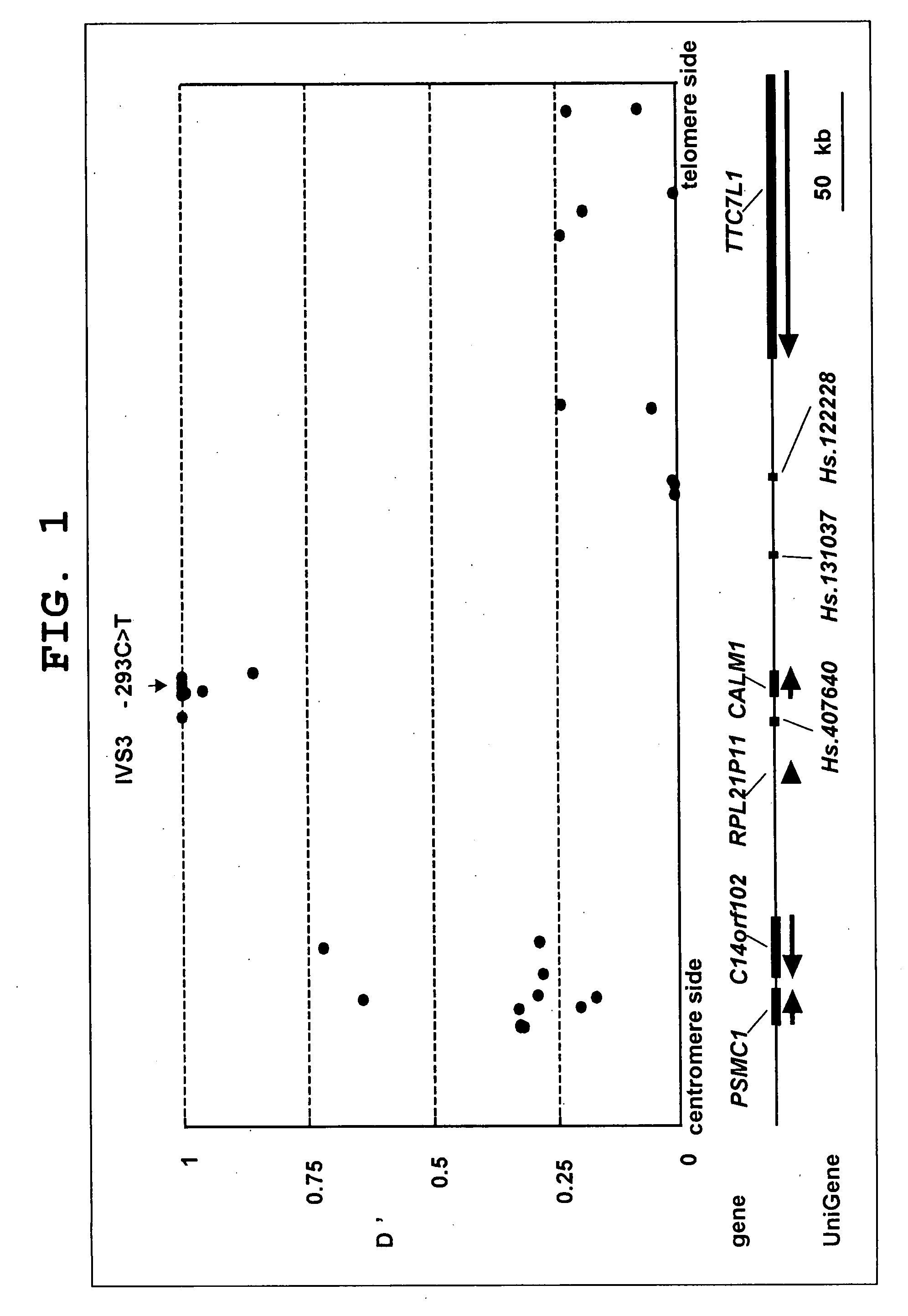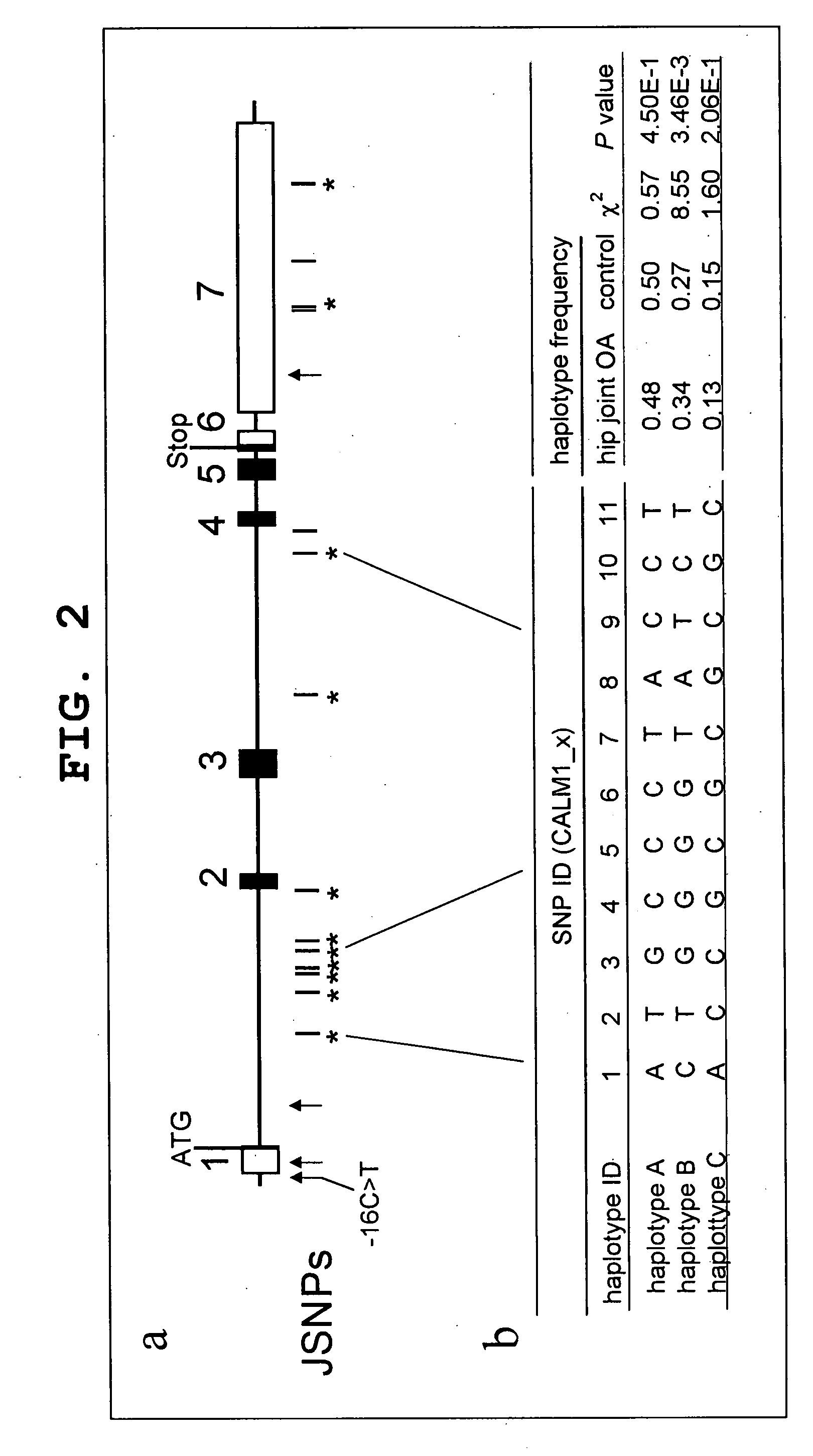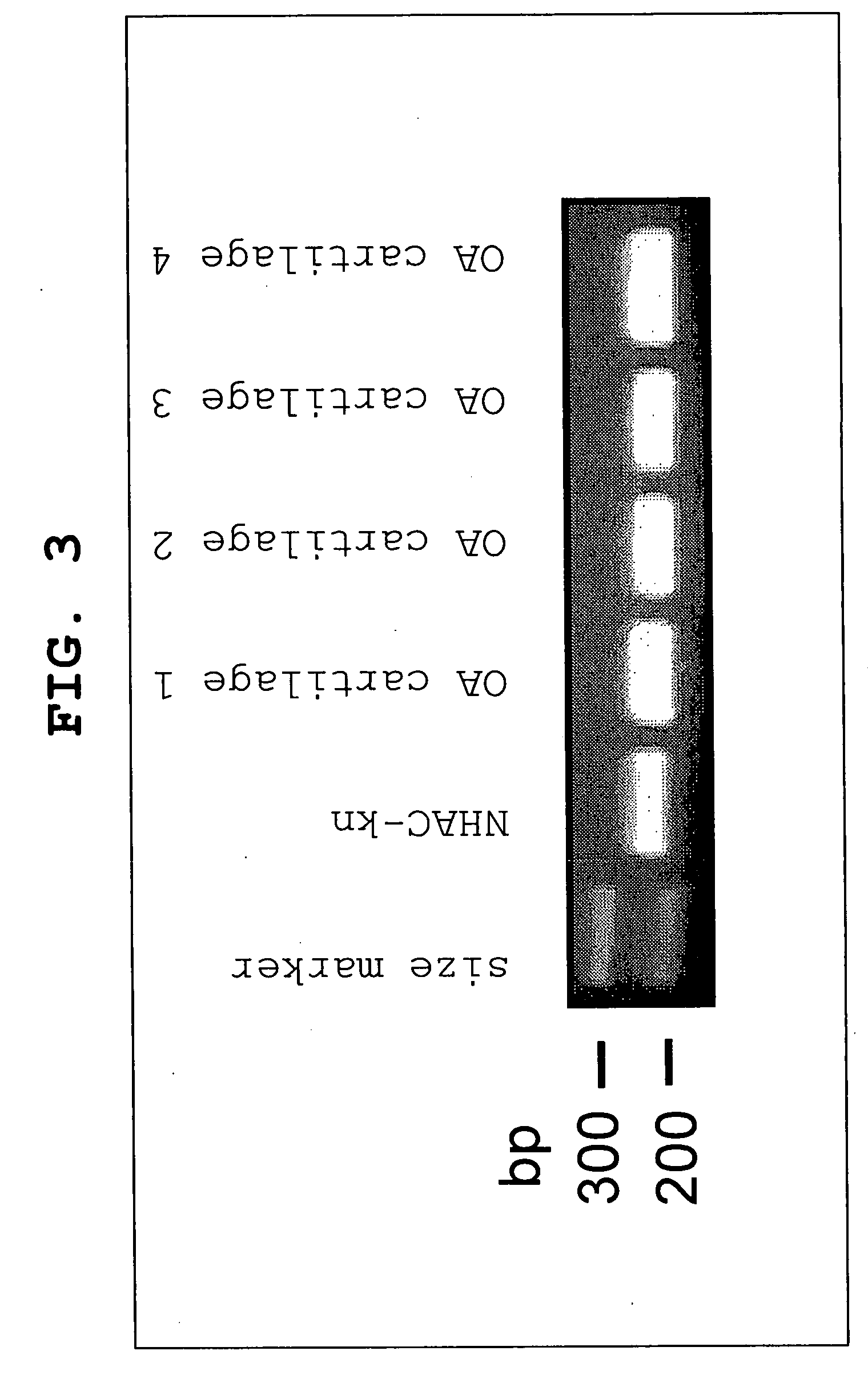Bone/joint disease sensitivity gene and use thereof
a sensitivity gene and joint disease technology, applied in the field of bone/joint disease sensitivity genes, can solve the problems of deterioration of the qol of the elderly, no fundamental therapeutic approach for oa, etc., and achieve the effects of reducing the ability of chondrocyte differentiation, promoting differentiation, and increasing the expression of a cartilage substrate gen
- Summary
- Abstract
- Description
- Claims
- Application Information
AI Technical Summary
Benefits of technology
Problems solved by technology
Method used
Image
Examples
example 1
Large-Scale Correlation Analysis
[0519]All subjects were Japanese. Correlation analysis was performed on 81,398 SNPs selected randomly from the JSNP database (http: / / snp.ims.u-tokyo.ac.jp / ), a database of Japanese SNPs. First, for screening, genotyping was performed on genomic DNAs extracted from a group of 94 patients with hip joint OA and a group of 658 controls, by the invader method according to the method of Ohnishi et al. (J. Hum. Genet., 46:471 (2001)), and χ2 test or Fischer's exact test was performed. For 2,219 SNPs exhibiting a P-value of less than 0.01 in these tests, genotyping was performed on a group of 335 patients with hip joint OA and a group of 375 controls without overlapping the aforementioned samples, and the same tests were performed. As a result, CALM1 IVS3-293C>T on chromosome 14 (14q24-q31) (FIG. 2b, corresponding to SNP ID: CALM1—9 in the left table and the base number 6641 in SEQ ID NO:1) showed a high correlation with hip joint OA (Table 1).
TABLE 1Correlat...
example 2
Haplotype Analysis
[0521]Fourteen JSNPs have already been registered for CALM1. To identify hip joint OA susceptibility alleles in CALM1, using genomic DNAs from 16 patients with hip joint OA, direct sequencing was performed for the 5′-flanking region, exons, and exon-intron junctions of the CALM1 gene using the ABI3700 capillary sequencer (Applied BioSystems) in search of novel SNPs. As a result, in addition to the 14 SNPs in CALM1 registered with the JSNP database (FIG. 2a, vertical bar), one novel SNP was detected in each of the 5′-flanking region, exon 1, intron 1 and exon 7 of CALM1 (FIG. 2a, arrows). Using the genotype data on 11 SNPs having a minor allele frequency of not less than 10% present in CALM1 (FIG. 2a, asterisks), the haplotype structure was deduced with Arlequin software. As a result, it was estimated that three common haplotypes covering about 90% of all haplotype frequencies are present in this region (FIG. 2b, haplotypes A to C). Of these, haplotype B showed a co...
example 3
CALM1 Expression Analysis in Chondrocytes
[0522]Normal human articular chondrocytes of knee joint (NHAC-kn, Takara) were used after being embedded in alginate beads and cultured in the attached differentiation medium (CDM) for 2 weeks. OA articular cartilage was obtained from patients (n=4) to undergo prothetic replacement of knee joint with informed consent. Total RNA was extracted using ISOGEN (Nippon Gene), and cDNA was synthesized from 500 ng of the total RNA using Multi Scribe Reverse Transcriptase (Applied Biosystems). With the cDNA obtained as the template, PCR was performed using the primers for human CALM1 gene amplification shown in Table 4. PCR reactions were performed using a system of a final volume of 20 μM [reverse transcription reaction mixture 1 μl, 10×Ex Taq buffer (Takara) 2 μl, 2.5 mM dNTP mixture 1.6 μl, Ex Taq (Takara) 0.1 μl, 10 μM forward primer 0.4 μl, 10 μM reverse primer 0.4 μl, nuclease 14.5 μl]. PCR amplification products were separated with 2% agarose ge...
PUM
| Property | Measurement | Unit |
|---|---|---|
| temperature | aaaaa | aaaaa |
| temperature | aaaaa | aaaaa |
| temperature | aaaaa | aaaaa |
Abstract
Description
Claims
Application Information
 Login to View More
Login to View More - R&D
- Intellectual Property
- Life Sciences
- Materials
- Tech Scout
- Unparalleled Data Quality
- Higher Quality Content
- 60% Fewer Hallucinations
Browse by: Latest US Patents, China's latest patents, Technical Efficacy Thesaurus, Application Domain, Technology Topic, Popular Technical Reports.
© 2025 PatSnap. All rights reserved.Legal|Privacy policy|Modern Slavery Act Transparency Statement|Sitemap|About US| Contact US: help@patsnap.com



